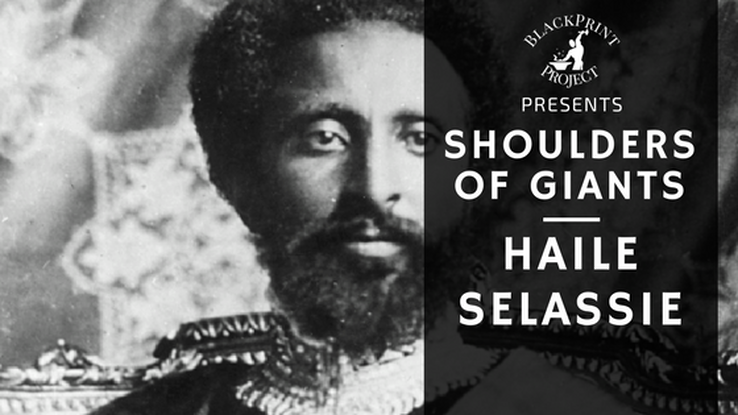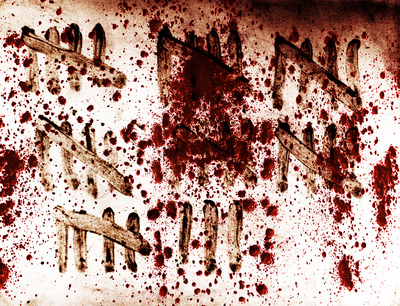|
June 15, 2015
|
From the Inkwell of: Bartholomew J. Worthington III
|
|
Born - July 23, 1892
Died - August 27, 1975 The man who would become Ethiopia's last emperor was born Ras (Prince) Tafari Makonnen on July 23, 1892 in the town of Harer, Ethiopia. Tafari would become Ethiopia's 225th Emperor, and could trace his lineage back to Menelik I, long considered the child of King Solomon and the Queen of Sheba. When his father, Ras Makonnen, died in 1906, the young Tafari was taken in by his father's cousin, Emperor Menelik II. Menelik II, who had no male descendent to succeed him, took Tafari under his wing as a possible heir to the throne.
When Menelik II passed, however, his grandson, Lij Yasu succeeded him instead of Tafari. Lij Yasu would prove to be extremely unpopular in the largely Christina nation, due to his close ties to Islam. Tafari would manage to orchestrate Yasu's ouster from power, and Zauditu, Menalik's daughter, would replace him, the first female to rule the nation since the queen of Sheba. Zauditu would appoint Tafari as her regent, and heir apparent to the throne. Their alliance was an uneasy one due to the clash of Tafari's more progressive nature versus Zauditu's more conservative leanings. Tafari became the symbol of Ethiopian progressiveness, and embodied the hopes of its youth population. In 1923, Tafari would secure Ethiopia's inclusion in the League of Nations, and in 1924, he would become the first Ethiopian king to travel to Europe, visiting Rome, Paris and London. In 1928, he would adopt the title of Negus (King) and in 1920, when Zauditu died, Tafari would officially become the appointed emperor of Ethiopia. He changed his name to Haile Selassie, Might of the Trinity. In 1921, Haile would begin to enact his progressive agenda: developing a new Constitution that limited the Ethiopian Parliment's authority, establishing provincial schools, strengthening the police forces, all while centralizing and expanding his own powers. In 1935, Italy would again invade Ethiopian, and after a couple of years of fighting to repel the invaders, Selassie was forced into exile. On June 30, 1936, Haile SElassie, a slender, almost frail looking man, with sharp chiseled features would address the League of Nations in Geneva, Switzerland. His passionate and regal delivery made the the case for League intervention against Italy's aggression. While the League would fail to act on his appeal, Haile Selassie became an international figure a recognized world leader, and the face of the resistance to Fascism. At the open o fWorld War II, England would provide Ethiopia military and tactical assistance and in 1941, the joint forces would recapture the capital of Addis Abada. The reinstated Selassie would return to the implementation of his social, economical and educational agenda as he sought to modernize Ethiopia. Over the next 30 years, Haile Selassie would rule Ethiopia and enact its most progressive reforms. Among his accomplishments were improved health care, enhanced transportation and infrastructure, increased foreign trade, expanded education and the creation of Ethiopia's first college. Some Ethiopians felt that Selassie's reforms weren't substantial enough and a failed coup led to a rightward shift in his philosophies. Selassie would also start spending more time and energy focusing on foreign affairs, specifically concentrating on African issues. Haile would become a leader in the Pan African movement, being instrumental in the formation of the Organization of African Unity, which was headquartered in Addis Ababa. He worked to support the independence of former European colonies, took a stand against South Africa's apartheid policy, condemned French nuclear tests in the Sahara and worked to mediate dusputes between African nations. While Selassie was busy attending to foreign affairs, however, things were falling apart at home. A civil war sparked by Islamic Eritreans seeking to regain their independence from a Christian Ethiopia, broke out in 1962, and would rage into the 1980s. In 193, a drought and crop failure would cause nationwide famine which killed tens of thousands of Ethiopians. A subsequent Arab oil embargo would further deplete the nation's treasure, and in September of 1974, Haile Selassie would be forcibly removed from power and imprisoned. Haile Selassie would never be seen alive again and he was reportedly strangle to death on August 27, 1975. Ethiopia would spend the bulk of the next 20 years in chaos as bitter infighting, drought, famine and civil war would undo most of the progressive reforms that Haile Selassie had implemented. His 50 year reign would establish a young prince as a near mythological figure, a Pan African icon, and the central figure for a religion that is still observed today. 3 Lessons
“Observe that anyone who dies for his country is a fortunate man, but death takes what it wants, indiscriminately, in peace-time as well as in war. It is better to die with freedom than without it.” Haile Selassie I
|
Popular Articles
2014 Quotes
|






